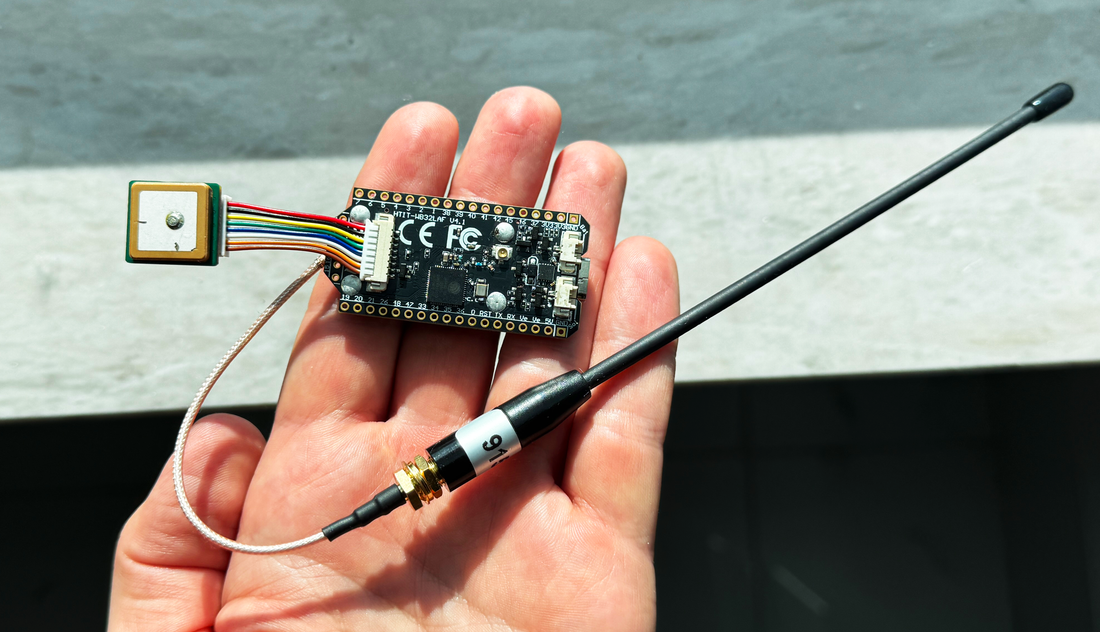
The Secret is Out — Meet the Heltec V4
Share
Heltec has quietly been preparing the successor to its wildly popular V3 LoRa board — the same board that helped kick off the Meshtastic boom. The new Heltec V4 isn’t available to the public just yet (expected later this September), but I managed to get an early unit in hand.
And from what I’ve seen so far, this board has the potential to become one of the most powerful Meshtastic nodes yet.
What’s New in the Heltec V4
At first glance, the V4 looks a lot like the V3. It still runs on the ESP32-S3 MCU, which means Wi-Fi, Bluetooth, and more compute power than Nordic-based boards — but also a little more power draw.
The big upgrades come in the I/O and RF side of the design:
- Solar Charging Port – A dedicated JST solar connector that manages charging for your battery. This makes the V4 the first ESP32 board with built-in solar support.
- GPS Port – A snap-in port for ceramic GPS antennas, letting you locate your node and put it on the map with no hacks required.
- Wi-Fi Antenna Connector – The old spring antenna is gone. The V4 replaces it with a U.FL connector for proper external antennas.
- Optional Larger Screen – Slightly bigger monochrome OLED, now mounted with screws on the front instead of the back.
- Case Compatibility – The PCB footprint matches the V3, but the battery placement has changed. Some older cases (like the MuziWorks H1) won’t fit without tweaks. Our SkyMesh drone mount fits fine with no modification.
The Power Upgrade
Here’s the spec that caught my attention:
- V3 transmit power: ~22 dBm (~150 mW)
- V4 transmit power: up to 27 dBm (~500 mW)
That’s not a linear jump — it’s logarithmic. The V4 has about 4× the output power of the V3. In theory, this means stronger links through interference, buildings, or foliage, and more reliable connections at the edge of coverage.
Throughput won’t change (that’s dictated by LoRa modulation), but range and stability absolutely should.
Early Testing
Right now, Meshtastic firmware hasn’t fully caught up to the V4. To get it running, I had to flash the V3 firmware build. As a result, side-by-side tests against the V3 aren’t showing the expected power jump yet.
Using an RTL-SDR to monitor transmissions, the V3 actually appeared stronger — likely because the firmware isn’t leveraging the V4’s full capability. RSSI and SNR tests showed nearly identical signals between the two.
So the promise of 27 dBm is real, but we’ll need updated firmware to unlock it.
What This Means for Builders
For anyone working with Meshtastic or custom LoRa networks, the Heltec V4 could become the new go-to board:
- Solar support means easier off-grid deployments.
- GPS support means simpler node mapping.
- More transmit power means longer range and better reliability in tough environments.
And because it shares a footprint with the V3, many existing accessories and mounts (like our SkyMesh V4 drone mount) already fit.
What’s Next
Once Meshtastic firmware supports the V4 directly, I’ll be running bigger tests — including a long-range attempt between Jupiter and Miami (~60 miles). The V3s didn’t quite make it, even at high altitude with long-slow presets. The V4 might finally push the link through.
Stay tuned — this is just the beginning for the Heltec V4.